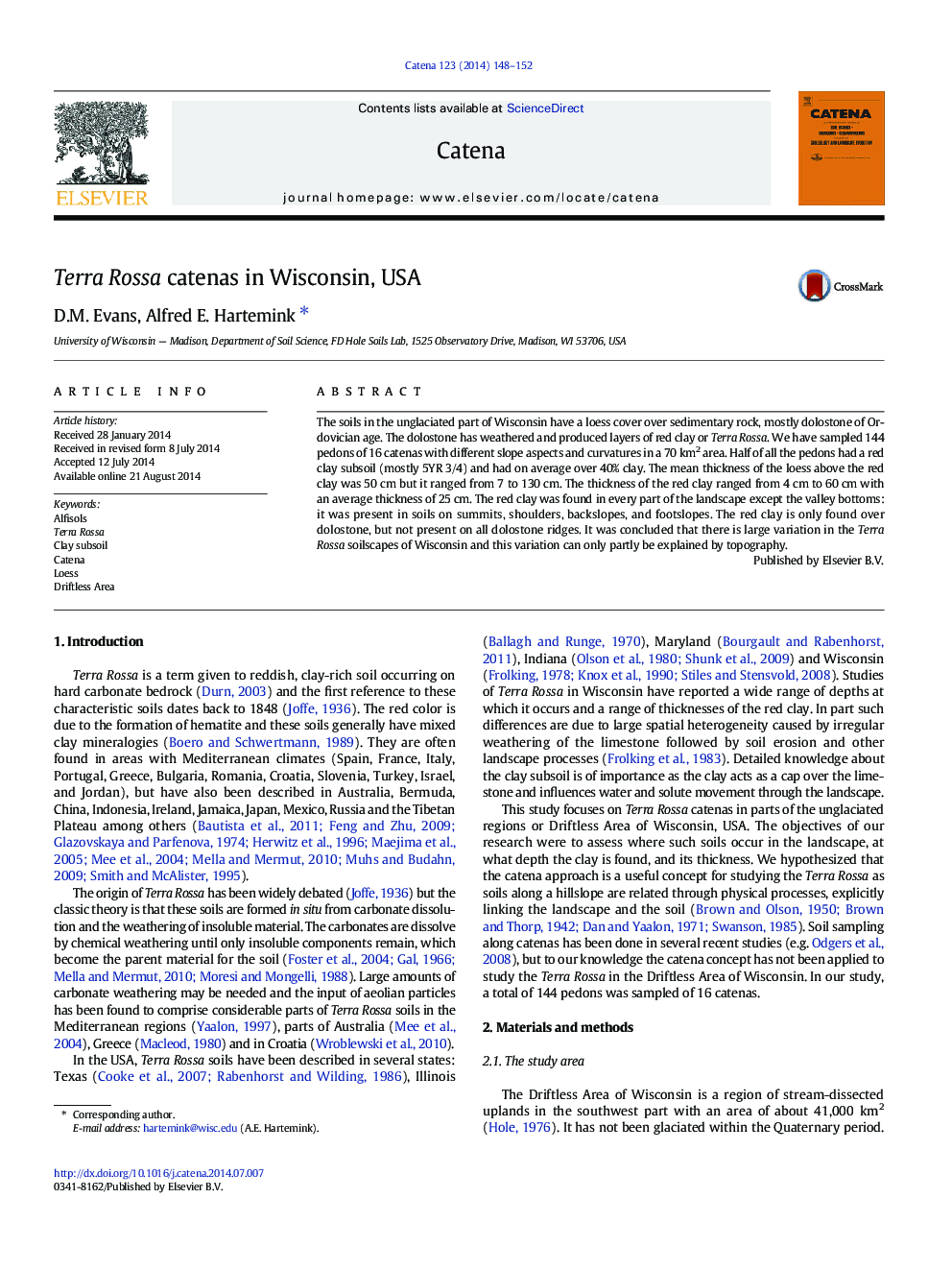| Article ID | Journal | Published Year | Pages | File Type |
|---|---|---|---|---|
| 4571350 | CATENA | 2014 | 5 Pages |
•In half of the sampled pedons red clay subsoils were found.•Mean depth to the red clay was 50 cm (range 7 to 130 cm).•Thickness of the red clay ranged from 4 to 60 cm (average 25 cm).•The red clay subsoil is found in all landscape positions except valley bottoms.
The soils in the unglaciated part of Wisconsin have a loess cover over sedimentary rock, mostly dolostone of Ordovician age. The dolostone has weathered and produced layers of red clay or Terra Rossa. We have sampled 144 pedons of 16 catenas with different slope aspects and curvatures in a 70 km2 area. Half of all the pedons had a red clay subsoil (mostly 5YR 3/4) and had on average over 40% clay. The mean thickness of the loess above the red clay was 50 cm but it ranged from 7 to 130 cm. The thickness of the red clay ranged from 4 cm to 60 cm with an average thickness of 25 cm. The red clay was found in every part of the landscape except the valley bottoms: it was present in soils on summits, shoulders, backslopes, and footslopes. The red clay is only found over dolostone, but not present on all dolostone ridges. It was concluded that there is large variation in the Terra Rossa soilscapes of Wisconsin and this variation can only partly be explained by topography.
